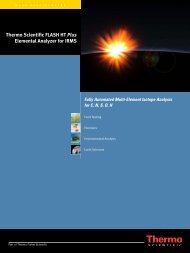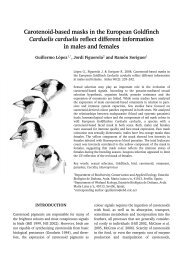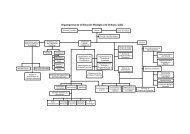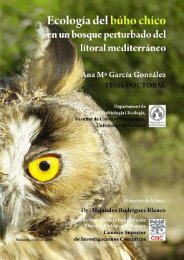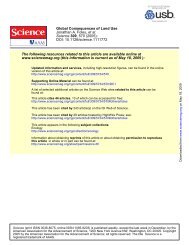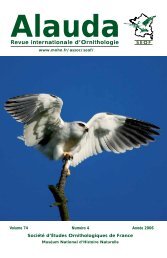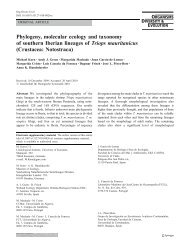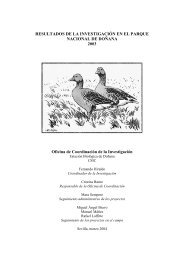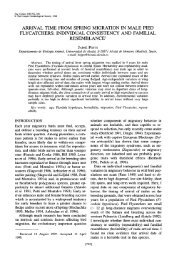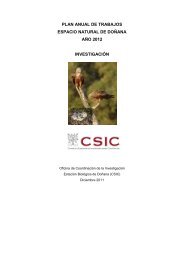Voucher Specimen Collection Preparation Identification and Storage ...
Voucher Specimen Collection Preparation Identification and Storage ...
Voucher Specimen Collection Preparation Identification and Storage ...
Create successful ePaper yourself
Turn your PDF publications into a flip-book with our unique Google optimized e-Paper software.
7.3 <strong>Preparation</strong> <strong>and</strong> Care of <strong>Specimen</strong>s<br />
<strong>Specimen</strong> preparation is crucial. Incorrect or careless mounting or preserving of a specimen<br />
can greatly reduce its scientific value. Techniques used for proper preparation vary greatly<br />
depending on taxon, medium used to collect <strong>and</strong> preserve specimens <strong>and</strong> taxonomic expertise<br />
enlisted to do identifications. The Insects <strong>and</strong> Arachnids of Canada (Martin 1977) is<br />
accepted as the st<strong>and</strong>ard for collecting, preparing <strong>and</strong> preserving specimens. See the<br />
reference section for instructions to obtain this document. However, as most specimens will<br />
be sent to taxonomists/systematists across North America <strong>and</strong> Europe, specimen preparation<br />
will be governed by the identifier. Resources Inventory Committee (1998) recommends that a<br />
list of taxonomic help with specifications for sample preparation be established before the<br />
inventory is initiated.<br />
Unless otherwise specified, Martin (1977) should be used as the st<strong>and</strong>ard for the Royal BC<br />
Museum collections. Page numbers for specific sections refer to Martin (1977).<br />
7.3.1 <strong>Identification</strong><br />
• A widely used key for basic insect identifications to family is Borror, Delong <strong>and</strong><br />
Triplehorn (6 th ed.) 1989. Introduction to the study of insects. Spider identification -<br />
Kaston 1972; Myriapod identification - Kevan <strong>and</strong> Scudder 1989.<br />
• Keys in Manual of Nearctic Diptera, volume 1 (McAlpine et al. 1981), <strong>and</strong> volume 2<br />
(McAlpine et al. 1987) may also be used for Diptera.<br />
• St<strong>and</strong>ards for species names:<br />
• Orthopteroid insects - Vickery <strong>and</strong> Kevan 1985<br />
• Lepidoptera (except butterflies) - Hodges, R.W. et al., ed. 1983<br />
• Butterflies - Layberry et al. 1998<br />
• Hymenoptera - Krombein et al. 1979<br />
• Coleoptera - Bousquet 1991<br />
• Odonata - Walker 1953; 1958; Walker <strong>and</strong> Corbet 1975<br />
• Diptera - Stone et al. 1965<br />
7.3.2 Equipment <strong>and</strong> Methods for Collecting<br />
Topic<br />
Page reference<br />
1. Nets 11<br />
2. Traps 15<br />
3. Other 33<br />
4. Aspirator 43<br />
5. Soil sampling 47<br />
6. Aquatic traps 57<br />
7. Vertebrate ectoparasites 67<br />
8. Killing bottles 73<br />
Note: Cyanide compounds should not be used; they are extremely poisonous, <strong>and</strong><br />
adequate killing agents, which are more easily obtained <strong>and</strong> more simply prepared, are<br />
available. Use ethyl acetate, soapy water, or freezing.<br />
32 June 9, 1999



